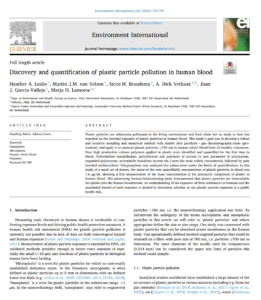This is a summary and explanation of the following research paper:
Discovery and quantification of plastic particle pollution in human blood
Published In: Environmental International
In: May 2022

Key Takeaways
- The study demonstrates for the first time that plastic particles are bioavailable for uptake into the human bloodstream, posing potential public health risks.
- The study detected four different types of plastic polymers in the blood of 22 healthy volunteers.
- The four types of polymers were:
- Polyethylene terephthalate (PET)
- Polyethylene (PE)
- Polymers of styrene (this includes a sum parameter of polystyrene, expanded polystyrene, acrylonitrile butadiene styrene, etc.)
- Poly(methyl methacrylate) (PMMA)
Summary of The Study
Objective and Methodology
The study aimed to measure plastic particles of size ≥700 nm in human blood.
It employed a sensitive sampling and analytical method using double shot pyrolysis-gas chromatography/mass spectrometry.
The research involved 22 healthy volunteers.
Key Findings
Four high production volume polymers were identified and quantified in human blood for the first time.
The polymers found were:
- Polyethylene terephthalate (PET)
- Polyethylene (PE)
- Polymers of styrene (including polystyrene, expanded polystyrene, acrylonitrile butadiene styrene, etc.)
- Poly(methyl methacrylate) (PMMA)
Polypropylene was also analyzed but was below the limits of quantification.
The average concentration of these plastic particles in blood was 1.6 µg/ml.
Significance
This study is the first to provide a measurement of the mass concentration of plastic particles in human blood.
It underscores the bioavailability of plastic particles for uptake into the human bloodstream.
The findings indicate potential public health risks and highlight the need for further research into the implications of microplastic pollution in humans.
